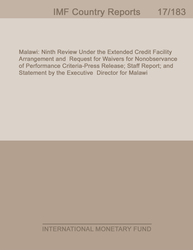
Republic of Belarus: Selected Issues
In the last 10 years Belarus saw very high growth rates interrupted by two crises.
READ MORE...
Volume/Issue:
Volume 2014
Issue 227
Publication date: July 2014
ISBN: 9781498357524
$18.00
Add to Cart by clicking price of the language and format you'd like to purchase
Available Languages and Formats
| English | ||||
| Russian |
Prices in red indicate formats that are not yet available but are forthcoming.
Topics covered in this book
This title contains information about the following subjects.
Click on a subject if you would like to see other titles with the same subjects.
Exports and Imports , Labor , ISCR , CR , wage , wage target , wage growth , deficit , exchange rate , first grade wage , rubel wage target , Belarus economy , debt liability , energy trade data , Wages , Current account deficits , Wage dynamics , Current account balance
Also of interest
Summary
This Selected Issues paper on Belarus examines wage setting, the role of wage targets, as well as wage dynamics, and the relationship with productivity. It finds that wage targets set by the government appear to be the key driver of rapid wage growth. Little regional and sectoral variation also suggests close adherence to official targets and a high degree of government control. Wage growth has outpaced productivity growth as the targets do not take productivity developments into account. In order to resolve these issues, in the short run, the authorities should aim for wage restraint to contain domestic demand and improve competitiveness. More generally, wage targets should be phased out to make way for more market-oriented wage-setting mechanisms. This should be complemented by deeper structural reform, dismantlement of the wider system of mandatory economic targets. wage targets should be eliminated as they restrict the flexibility to respond to market conditions. However, reform of wage setting will not be enough on its own and should be complemented by further structural measures to remove other distortions, such as direct and indirect subsidies to state-owned enterprises, which allow them to generate profit while at the same time maintaining excess employment.
Copyright © 2010 - 2024
Powered by:
AIDC



